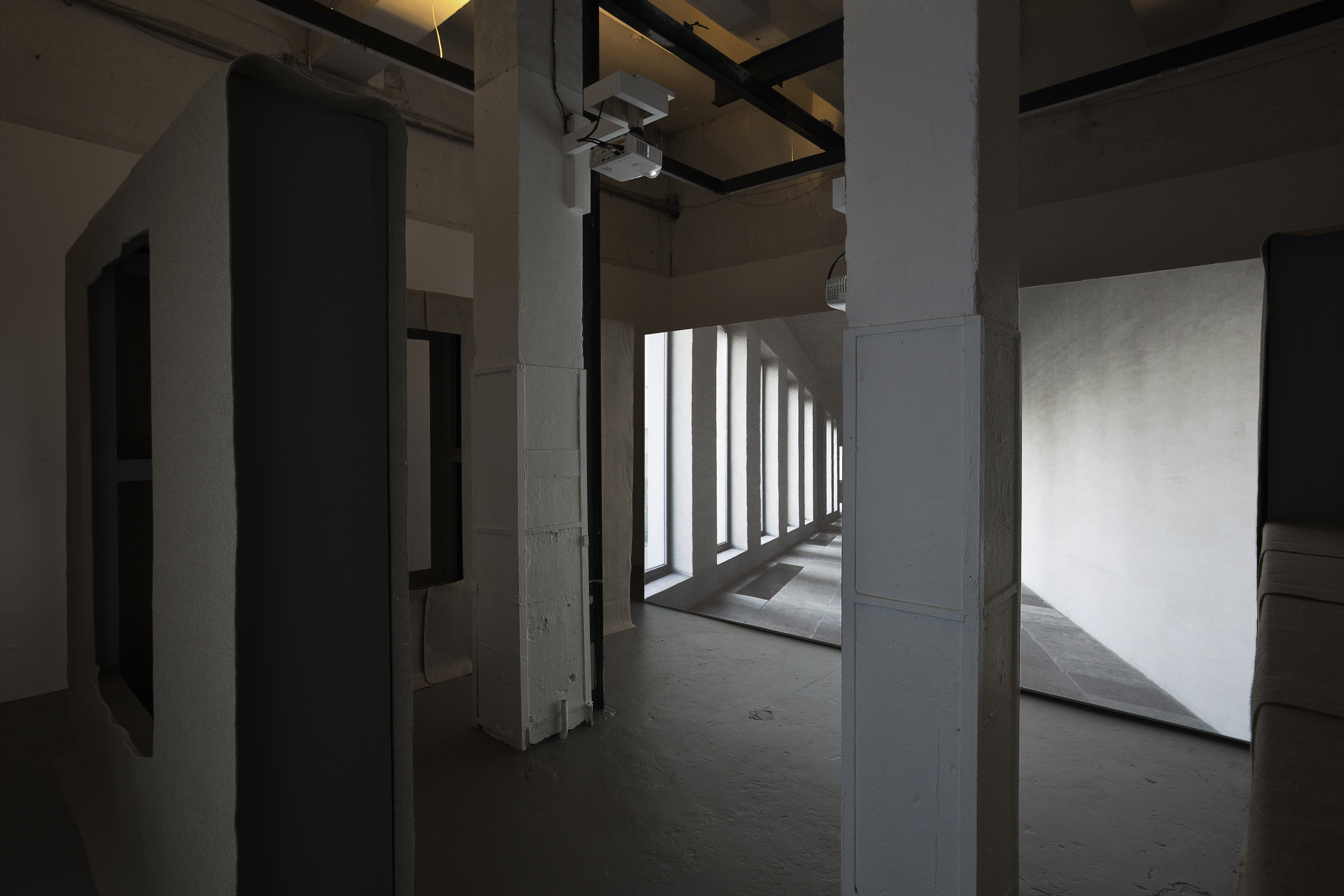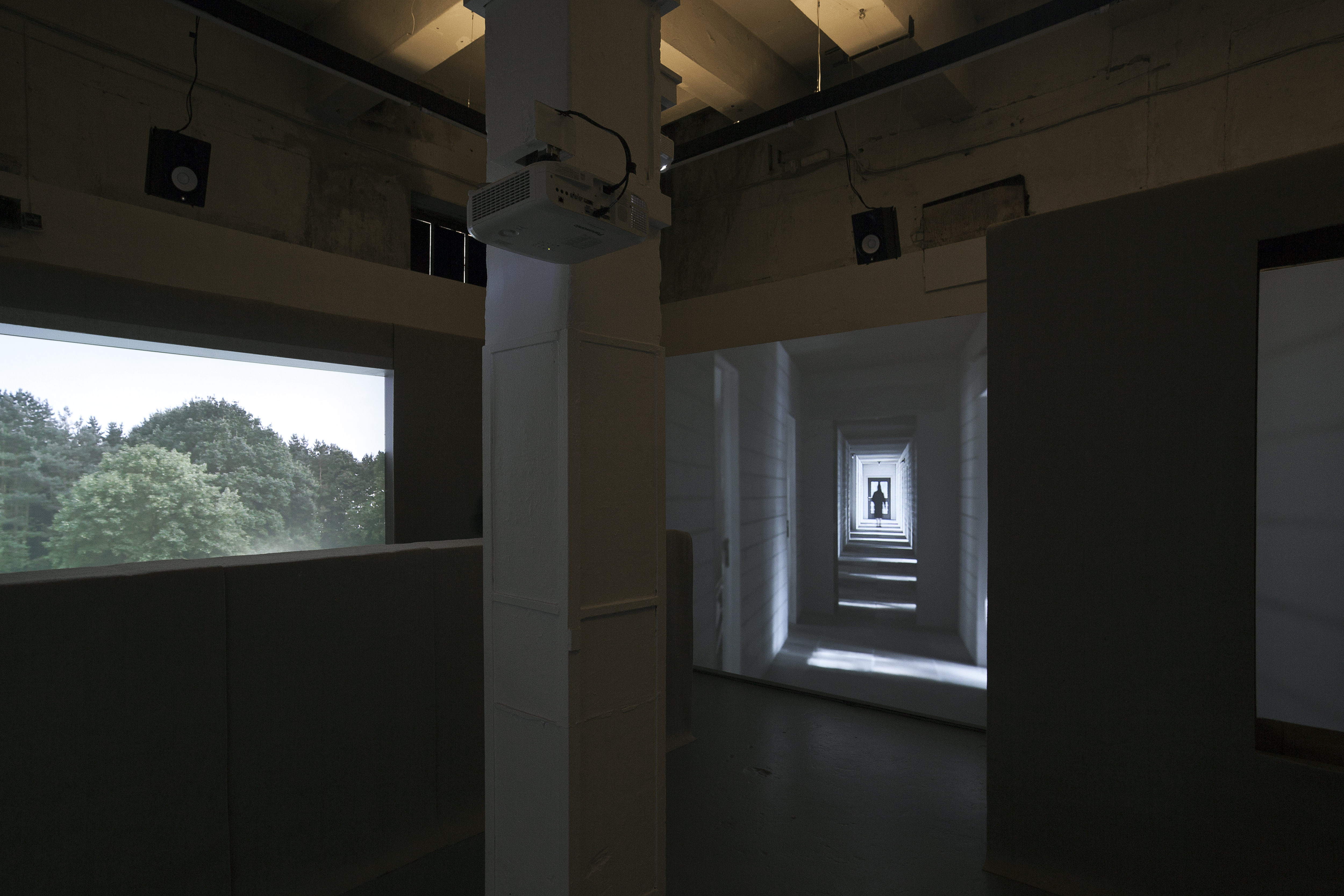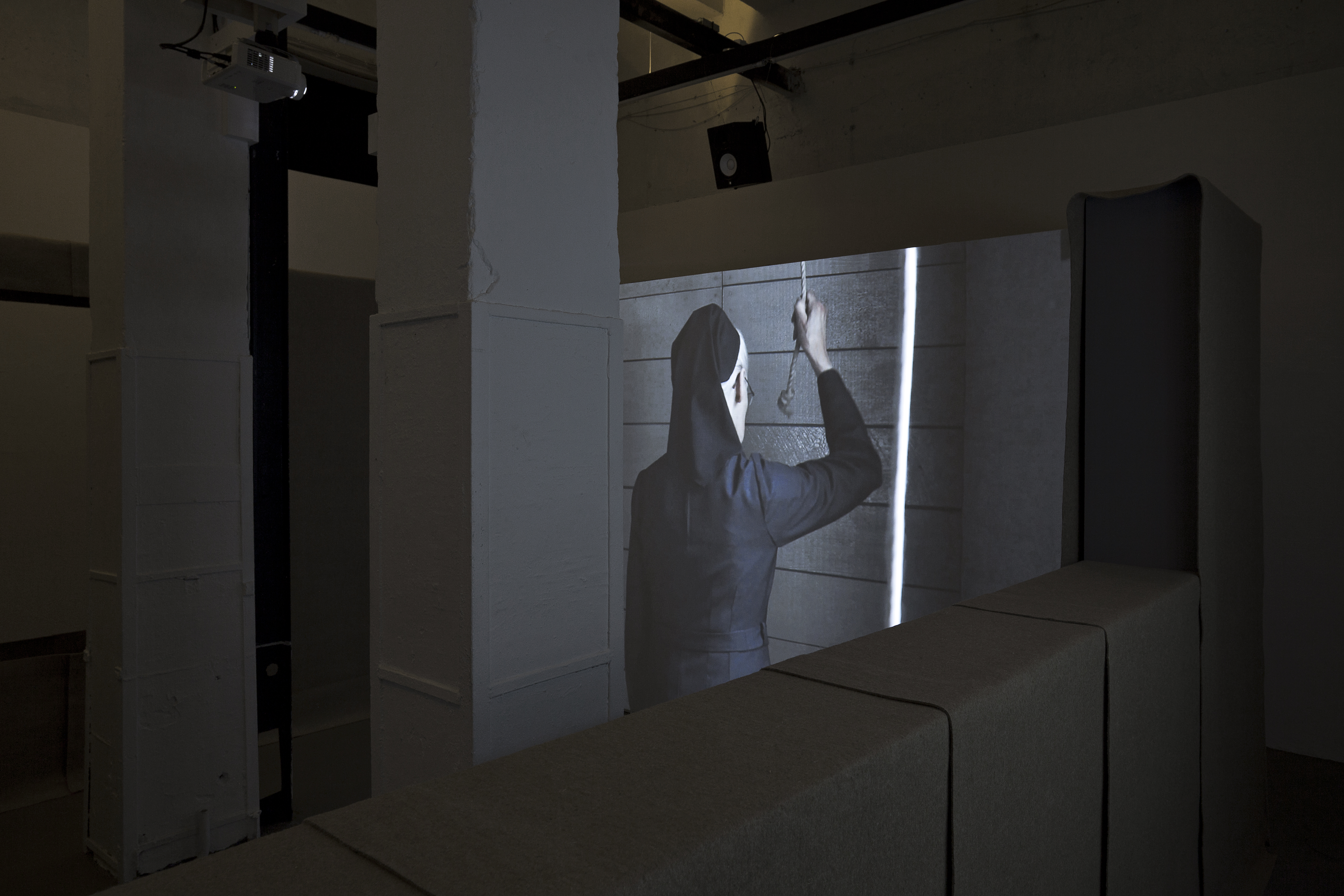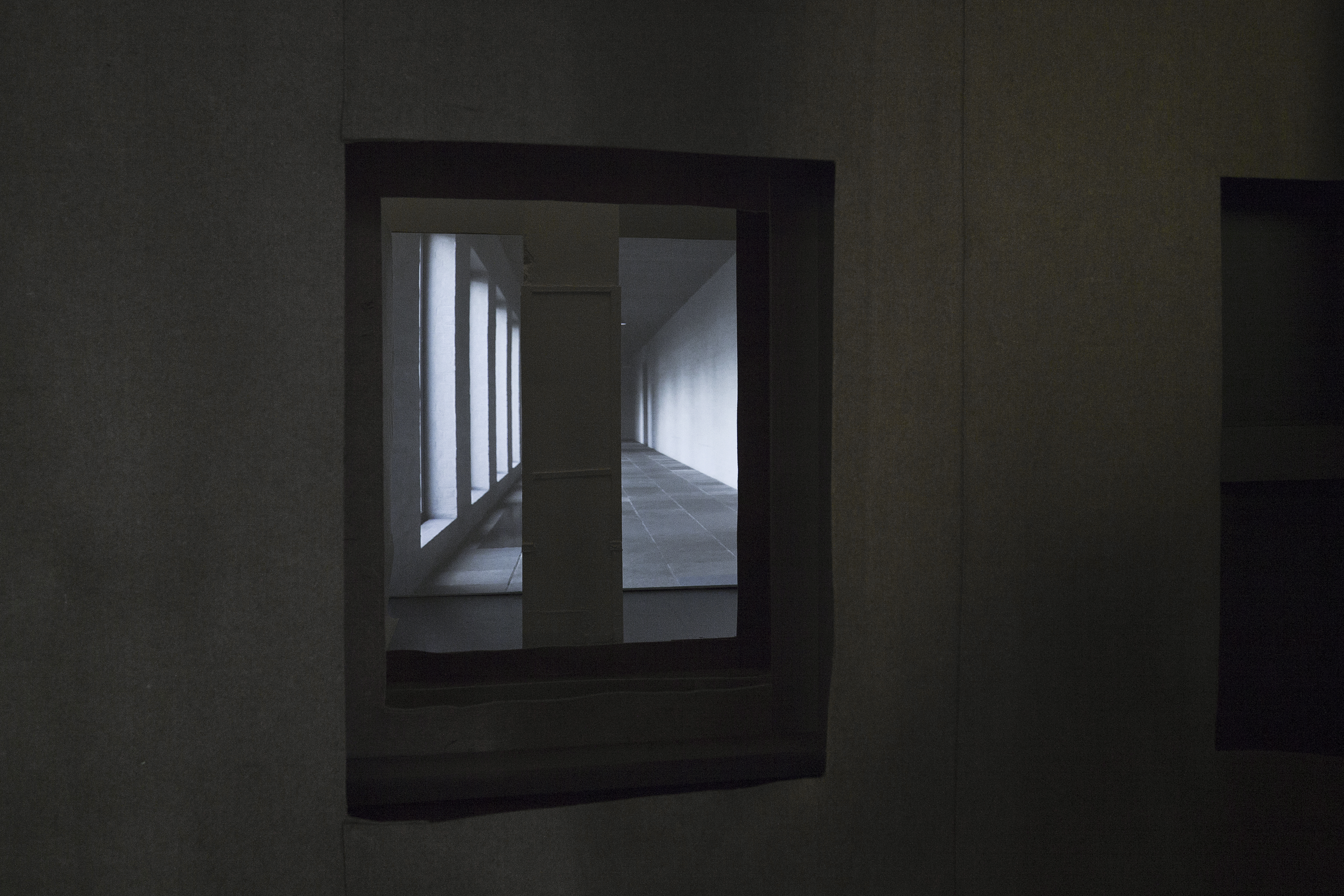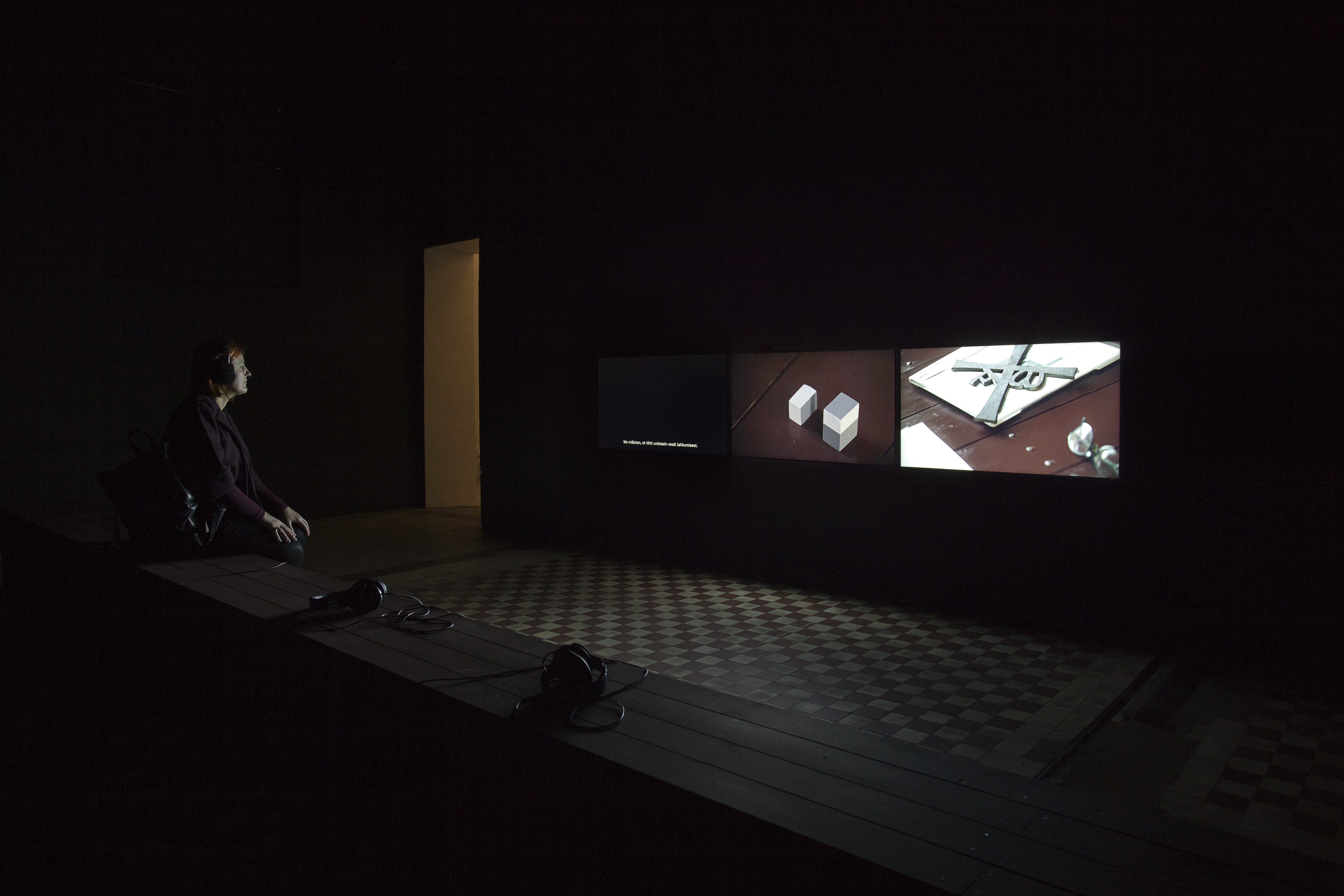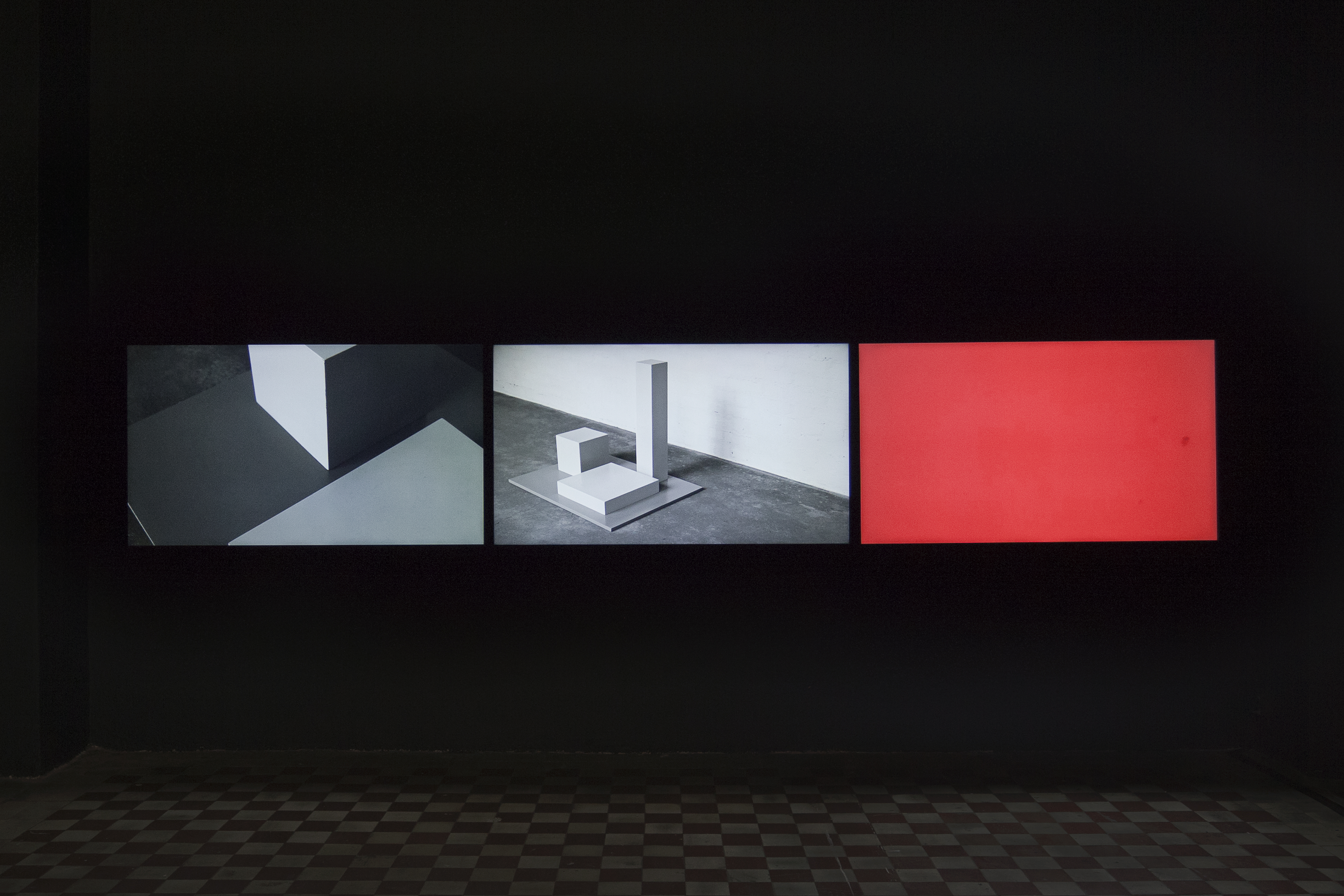Solo exhibition YOU HAVE BECOME THE SPACE at EKKM, Tallinn
- Ingel Vaikla
Ingel Vaikla’s solo exhibition YOU HAVE BECOME THE SPACE
17.11.–16.12.2018, Contemporary Art Museum of Estonia (EKKM)
BETWEEN SOLID AND THE VOID, 2018
spatial installation with multi-channel video projection, 7’30’’ loop, with sound
UNFOLD, 2018
3-channel video, 10’ loop, with sound
Curator: Laura Toots
Architects: Laura Linsi & Roland Reemaa
Sound designer: Simonluca Laitempergher
Grading: Max Golomidov
Graphic Design: Ott Metusala
Images: Ingel Vaikla, IICADOM archive footage
OBSTACLES AND HESITATIONS IN INGEL VAIKLA’S CINEMATIC SPACE
Laura Toots
Vaikla works at the intersection of multiple worlds. She is a visual artist and film-maker who examines the relationship between architecture and its users, presenting her works both on cinema screens and in exhibition spaces. Her work emphasizes the close relationship between architecture and moving images: Is there anything better suited to conveying the process of architecture than film? And what could better enable cinematographic composition than architecture
Throughout its process the exhibition You Have Become the Space has drawn on Vaikla’s film Roosenberg (2017), which examines the modernist abbey at Roosenberg, Belgium, and was designed by the extraordinary monk and architect Dom Hans van der Laan. Van der Laan’s architecture opens to reveal itself fully as the viewer passes through and thereby becomes aware of its recurring elements. Consistent, regular repetition is also a feature in the lives of the inhabitants of Van der Laan’s buildings. The same circular principle is embodied by the continuous loop of video works in the exhibition, which are located in the interconnected rooms of the exhibition space. For the exhibition, the multiplicity of perspectives is presented as a montage without a specific beginning or end, both in the videos and in the exhibition’s spatial design, introducing a layer of doubt and obstacle.
The visitor first enters the spatial video installation Between Solid and the Void, which is framed by walls of varying height and rigidity, each exposing their structures in different ways. The installation is illuminated from inside by video projections, presented on several screens, in a non-narrative, spatially – scattered way that surrounds and effectively swallows the viewer. It is as if Vaikla has somehow been able to travel within the image-space presented in her film Roosenberg and has returned with the spatial and visual materials of the installation to present to the viewer an immediate world consisting only of Van der Laan’s rhythm of surfaces and spaces.
In contrast to the previous work, the second work of the exhibition—a video on three screens entitled Unfold—is set in an empty room, as though attempting to escape the architecture of EKKM by introducing a vacuum within. Unlike Between Solid and the Void, Unfold is a horizontal work, highlighting various parallel surfaces and offering viewers a place to sit in contemplation. The work is based on the fluid relationship of memory and experience, and is Vaikla’s attempt to return to the convergence points of these experiences using metaphors that reflect her personal engagement with these matters. The human voice heard in the video reminds us of the fragility of remembering and the impossibility of reconstructing memories.
For this exhibition, Vaikla has analysed what it means to transpose a film from a singular big screen to the exhibition environment and has studied the proximity between active and passive viewing practices. In a cinema, the duration, narrative and even the spatial position of the viewer in relation to the screen, are all fixed. However, in a gallery space the viewer has the opportunity to throw those parameters into disarray and choose to accept the cinematographic and physical obstructions and uncertainties offered by the exhibition.
